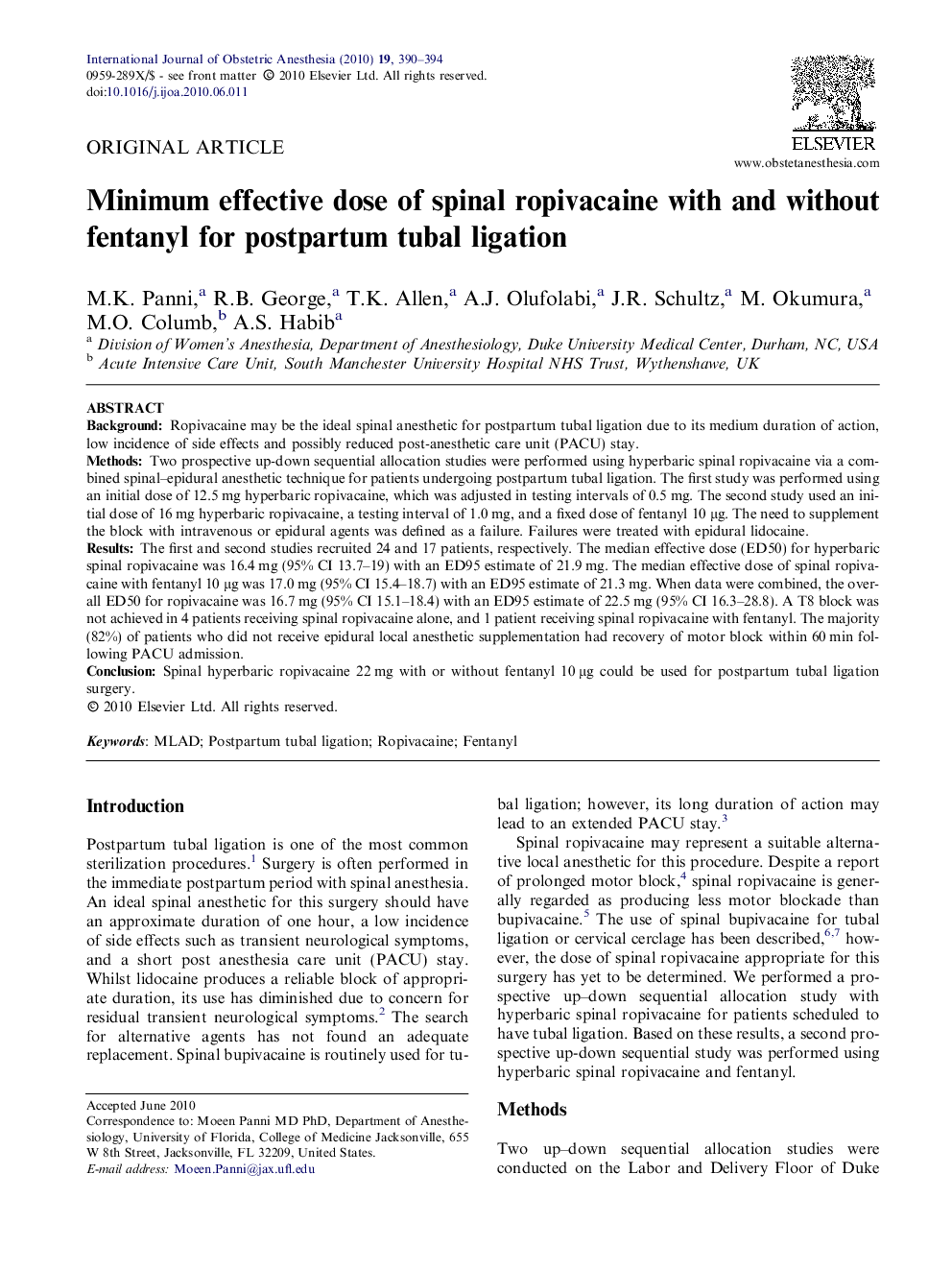| Article ID | Journal | Published Year | Pages | File Type |
|---|---|---|---|---|
| 2758241 | International Journal of Obstetric Anesthesia | 2010 | 5 Pages |
BackgroundRopivacaine may be the ideal spinal anesthetic for postpartum tubal ligation due to its medium duration of action, low incidence of side effects and possibly reduced post-anesthetic care unit (PACU) stay.MethodsTwo prospective up-down sequential allocation studies were performed using hyperbaric spinal ropivacaine via a combined spinal–epidural anesthetic technique for patients undergoing postpartum tubal ligation. The first study was performed using an initial dose of 12.5 mg hyperbaric ropivacaine, which was adjusted in testing intervals of 0.5 mg. The second study used an initial dose of 16 mg hyperbaric ropivacaine, a testing interval of 1.0 mg, and a fixed dose of fentanyl 10 μg. The need to supplement the block with intravenous or epidural agents was defined as a failure. Failures were treated with epidural lidocaine.ResultsThe first and second studies recruited 24 and 17 patients, respectively. The median effective dose (ED50) for hyperbaric spinal ropivacaine was 16.4 mg (95% CI 13.7–19) with an ED95 estimate of 21.9 mg. The median effective dose of spinal ropivacaine with fentanyl 10 μg was 17.0 mg (95% CI 15.4–18.7) with an ED95 estimate of 21.3 mg. When data were combined, the overall ED50 for ropivacaine was 16.7 mg (95% CI 15.1–18.4) with an ED95 estimate of 22.5 mg (95% CI 16.3–28.8). A T8 block was not achieved in 4 patients receiving spinal ropivacaine alone, and 1 patient receiving spinal ropivacaine with fentanyl. The majority (82%) of patients who did not receive epidural local anesthetic supplementation had recovery of motor block within 60 min following PACU admission.ConclusionSpinal hyperbaric ropivacaine 22 mg with or without fentanyl 10 μg could be used for postpartum tubal ligation surgery.
